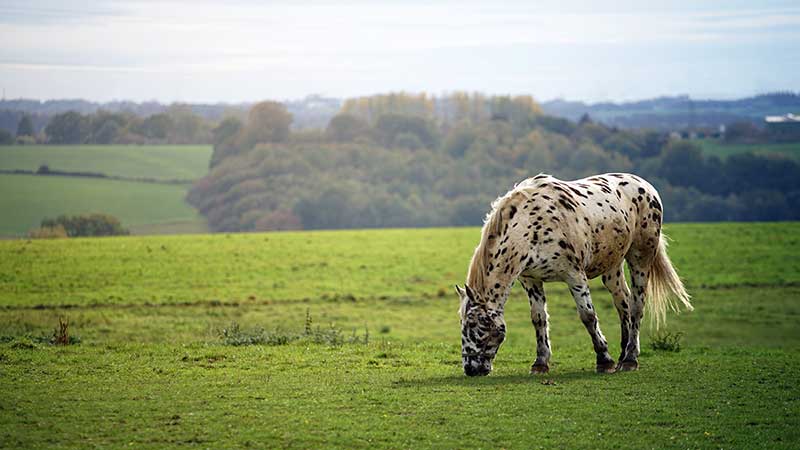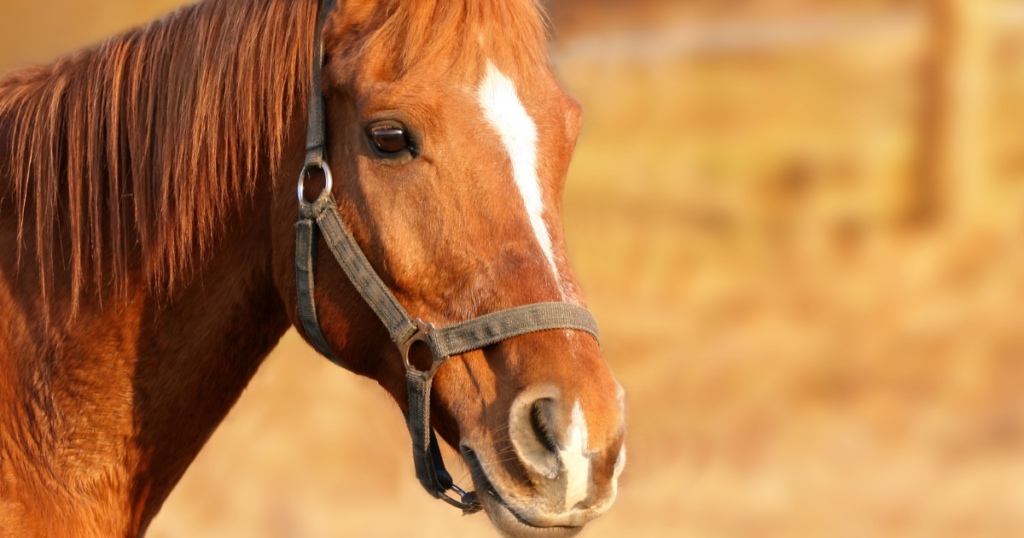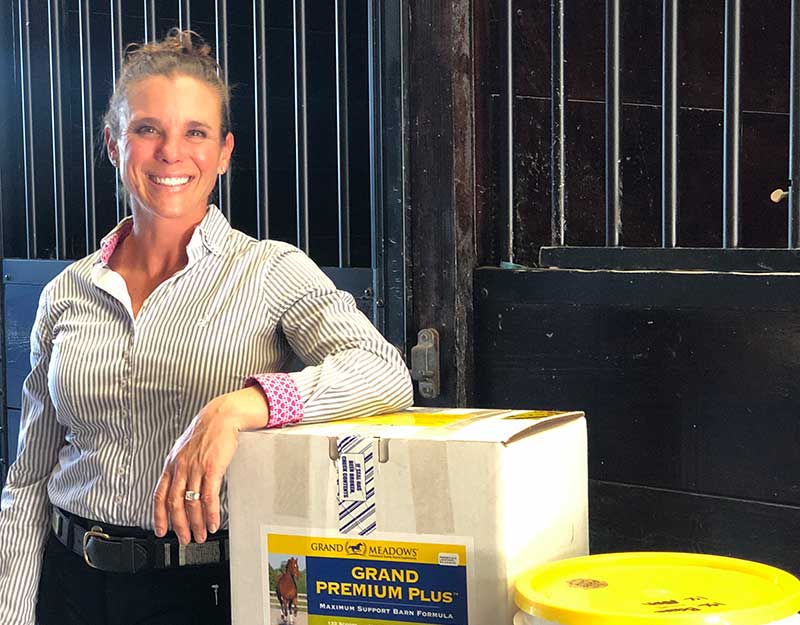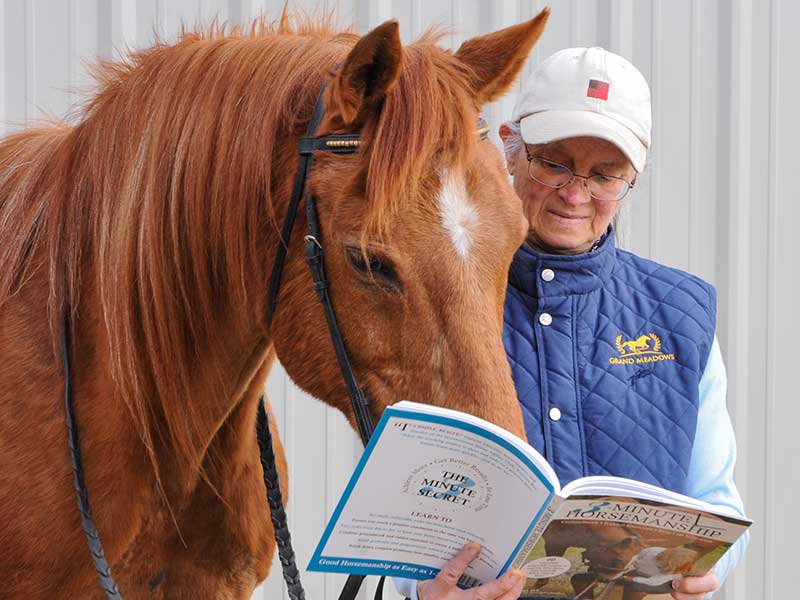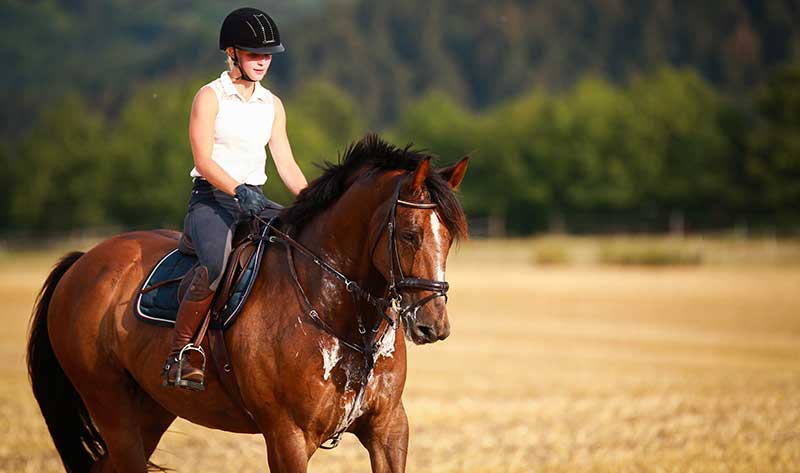Winter Helpers For Your Horse
by Nikki Alvin-Smith
While in some parts of the country the weather stays equitable and seasons come and go almost unnoticed, in many regions the marked changes of weather that come along with winter can pose challenges for the care and management of horses. Here are a few ideas on winter helpers for your horse based on my experience living on a mountain in the beautiful Catskill Mountains of New York where heavy snowfall, ice storms and temperatures that dip below zero degrees Fahrenheit on occasion, can cause mayhem for even the most prepared of horse owners.
Check Your Own Wardrobe
This may seem self-evident but surprisingly many horse owners simply do things the way they’ve always done – donning layers of flannel shirts, vests and jackets, mittens, a wool hat and a pair of somewhat waterproof footwear.
It’s time to get with it – there are so many fabulous winter wear helpers out there that work brilliantly for horse farm work. Fabrics that won’t rip, boots that are truly waterproof, heated gloves, socks, coats, jackets, hats and all the rest. And not just for farm work but also for riding in comfort.
Tip: We ride and perform better including thinking more clearly when we are not cold. And being warm when riding is important because the tension that being cold can cause the equestrian will be transferred to the equine that works beneath them.
If you are properly dressed for the weather and can keep warm and dry then you can stay outside longer, be safe from frostbite and lung damage and do more for your horses. So start shopping and get up to date.
Water Woes
Formulate a program that works for keeping your hose pipes clear of frozen water and this important liquid on tap regardless of the onslaught of long periods of below freezing temps.
Horses need warm water to drink if possible, as very cold water is less palatable to some horses and translates to less daily water intake which means a higher risk of colic.
There are many options to accomplish a reliable warm water source. But any water is better than none. Consider heated water tanks; frost free faucets with deeply buried supply lines within and outside of the barn in fields; interior radiant heated areas; drainage systems for major plumbing fixtures within the barn.
Tip: Whatever your preferred method, always have a back-up and always stockpile filled water buckets somewhere warm if you are expecting a major storm.
Power Through
Being left without power is no joke if you have a barn full of horses to water every day and your water supply is supplied by a well. While owning a 300-gallon plastic water tank that can be hoisted on the bed of a pick-up and filled from a local community use spring water source may be an option, consider getting a small mobile generator set up for quick plug in to run the water pump that serves the barn.
And importantly, keep any generator you own serviced and optimized for use.
Adjust Your Horsekeeping Methods
Depending on how long cold and bitter weather actually sticks around at any given time, horses generally fair well outside as long as they have some form of shelter and have access to plenty of good quality dry forage and water. While horses do best in 20 to 60 degrees Fahrenheit temperatures, they can quickly adapt to lower ranges. To save time and effort, it can be helpful to cut down your usual workload of keeping horses stabled and let them rough it outside for the winter season, given you are not training for the Olympics or need to keep them at peak performance level.
No clip versus full clipping of the horse can be best balanced for a horse that is turned out but kept in light work by choosing a blanket clip and blanketing the horse. This arrangement can keep a horse ready for schooling part-time throughout the season without becoming overheated from a thick winter coat on the neck and chest during a work and then requiring long cool down periods afterward. Never leave a moisture-ridden sweat sheet on a horse. Once it has done its job remove it and either replace it with a dry one or if the horse is dry go ahead and blanket.
Tip: If you want to decrease the drying time, adding fluffed handfuls of dry straw or hay under the anti-sweat sheet can speed the process. But be sure to groom off all the hayseeds or chaff off the horse before blanketing and clean off the sweat sheet for future use, as this detritus could cause skin irritation.
If it’s viable keep horses in herds, perhaps separating mares from geldings and certainly don’t just throw everyone out together and hope they get along. Proper introductions, supervision and monitoring conducted with small numbers and then adding two horses that know each other and get along to an established mix is obviously an important part of herd management. Why herds? Because it helps cut down the number of fields/paddocks/locations that need to be kept watered and hayed-up during cold winter months. It also means less snow plowing for access, less trips etc. Equine hay feeders can be a boon to saving hay on the budget with less wastage and better sharing.
Figure Out Access
Keep your horse trailer (in case of emergency needs) and plowing equipment accessible as well as ensuring all equipment that may be needed is in good working order. Winter is not the time to be fiddling around checking oil levels, getting the trailer inspected or moving stuff that is in the way of hitching up.
Tip: Store your hay close to where it will need to be served! Staging hay supplies and a temporary manure storage area close to the barn is a good idea. You can always refill and empty the areas during respites in the weather.
It is makes sense to create storage for plowing equipment closer to the residence then do that. If your tractor needs to be plugged in make sure you have the means to park it within reach of the outlet that will receive it safely voltage wise.
Avoid laying extensions out where they may be trodden on by shod horses or driven over by vehicles. And ensure all electrical wires and extensions are out of the reach of the inquisitive horse’s mouth or pet play areas. Extensions are rated for use, so ensure you use an outdoor rated UL extension that matches or exceeds the draw of the heater or other appliance you plan to utilize it for and install GFCIs (Ground Fault Circuit Interrupters) for additional safety.
Ensure any salt or de-icing products you store ( and you should have some on hand), are not toxic to animals. While your horse is unlikely to lick them off the floor, material picked up in horses’ hooves and then trodden into hay on the stall floor or taste-tested by your ‘foodie’ canine can cause significant problems.
Consider how you will move horses from barn to pasture. This sounds obvious but some gates are solid to the ground or have a low bar member to them that will not clear even 6” of snow so opening and closing it requires constant snow shoveling. Fences and gates for horses should always have a 9-12” clearance to the ground for safety reasons so if your gates are old, bent, sagging or annoying to open fix them in the good weather. That includes the gate hardware. It makes sense to save yourself the aggravation of trying to hold onto ‘a helium balloon horse’ with one hand while fiddling gloveless with an old rusty clip that is frozen shut in the other, by fixing stuff now. Not to mention, safer for both horse and handler.
Tip: Set driveway markers for snow plowing lanes after a period of rain before the ground freezes. It saves both effort to install them and breakage from pounding them in the ground. Stagger them and place them a few feet away from the edge of the driveway so they aren’t impacted during plowing and break/fall over, and to leave room for the snow discarded from the plow blade or thrower.
Your Equine Nutritional Needs
Be sure to adjust your horses’ diet to meet the changes in workload, as well as temperatures. Bear in mind digesting hay or dry forage will help a horse stay warm where excess grain can make them unnecessarily hot and fizzy and subject to digestive issues.
Consider your horses’ feed supplements too. Special needs for support with arthritis or seasonal disturbances aggravated by colder weather such as respiratory concerns can all be aided by the right supplement program.
Tip: As there is limited Vitamin A in cured hay and likely none in the pasture to speak of during winter months, consider adding a feed supplement to address hoof health.
Look Down
Both your own footwear and that of your horses should be user-friendly for the weather you expect and the work you plan to accomplish. Crampons may work well when you are out navigating your way to the barn but you might want to remove them when you enter the building to save damage to rubber mats and tack room floors.
Horses that are shod should have anti-slip measures applied to their shoes such as boron, and protection from snow balling in the hoof with bubble pads. Unshod horses should have their feet trimmed with a mustang roll to properly protect the outer layer of the wall from splitting or cracking. The hoof growth on a trimmed horse should be kept regularly trimmed to prevent balling up of snow and ice. Removing shoes does not mean no hoof care is required for three months of winter.
Enjoy The Season
Riding in the snow is a fun experience given both you and your horse are properly attired for the process. Rubber hoof boots can be useful but as they can ‘stick’ on the ground surface during hard stops consider adding leg protection too that can mitigate the chance of pulled ligaments and tendons.
Always avoid icy conditions or ice patches as one bad slip can cause life-threatening injuries and of course, always wear an ASTM approved helmet, even if you have to add ear warmers to keep toasty.
About the Author

Nikki Alvin-Smith is a seasoned freelance writer who loves to share her lifelong experience with everything horse, rural lifestyle, and travel. Her works have been printed in more than two hundred fifty equestrian magazines worldwide and her published articles number in the thousands.
A Brit who has called New York home for more than 40 years, Nikki brings a unique perspective to her writing. Her experience as an international level Grand Prix dressage competitor, coach, and worldwide clinician, with a youth spent showjumping and foxhunting, provides lots of educational truths and fun moments to share with the reader. Additionally, she has been a horse breeder and importer of Hanoverian, Dutch and Iberian horses for more than 25 years. Together with her husband Paul Alvin-Smith, who is also a Grand Prix rider, operates Willowview Hill Farm, an organic hay farm and private dressage yard in the beautiful Catskill Mountains of New York.
Visit nikkialvinsmithstudio.com or horseinakiltmedia.com to learn more.

